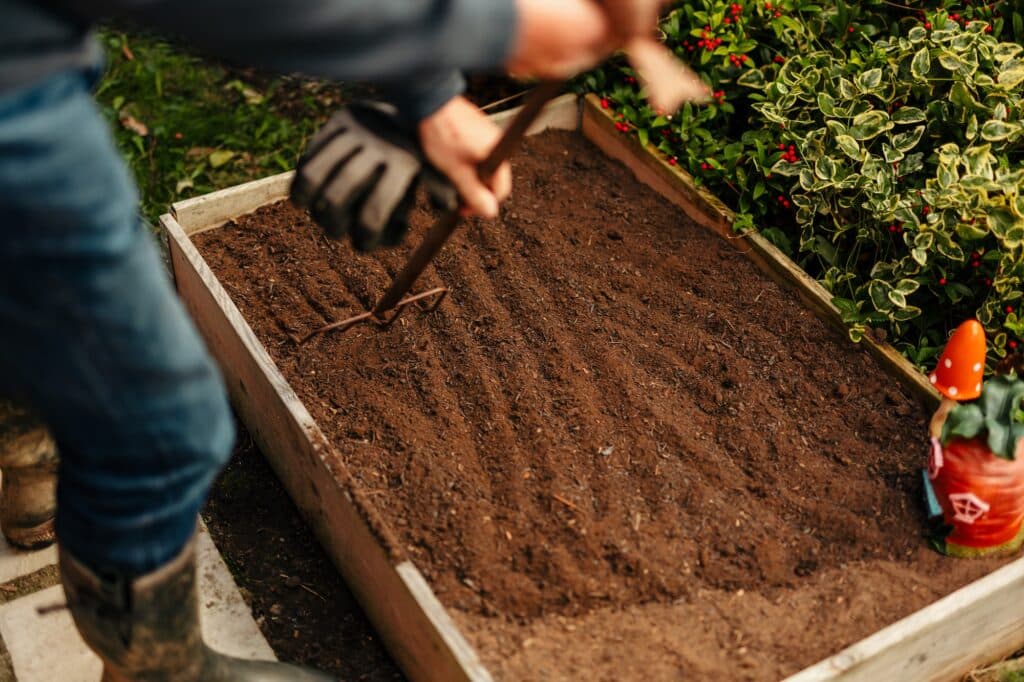Home / Information & advice / Topsoil & compost / Using topsoil / How to build a raised bed
When planning your raised beds it’s important to remember you’ll need to be able to access and work on it without having to stand on the bed, as this will flatten the soil. You’ll also need to make a path around the bed so you can get to it easily.
The minimum width for walking is usually about 30cm and if you want to use a wheelbarrow then you will need to allow sufficient additional access. If you make the paths too narrow, the bed will be too difficult to work on. If you or anyone who will be working in your garden uses a wheelchair or other mobility aid then you’ll have to take this into account too.

Raised beds can be made from various materials. You need to decide what your budget for your new project is and whether you want this to be a permanent feature of your garden. There are three main options when sourcing your materials:
The cheapest option is timber although bear in mind that even treated it will not be as long lasting as some options. Railway sleepers look great and last a long time but can be expensive and quite difficult to lift and cut to size. Use sleepers which are untreated or treated with non-toxic preservatives. An alternative is second-hand scaffolding planks. Masonry is attractive and permanent but can be an expensive option and it’s worth seeing what you can find at reclamation yards or recycle from other areas of your garden.
There are a few steps involved. Building a raised bed is not a five minute job but once the initial construction is complete, your bed should be easy to maintain and worth the effort for many growing seasons to come. Our quick guide assumes you are using timber to construct your raised bed but you can adapt this if you are using masonry or follow the manufacturer’s instructions if you have purchased plastic panels.
Find out about the benefits of raised beds here, or if you’re considering the no-dig approach check out our guide to creating a no-dig bed.
Ready to buy topsoil? Our task-specific topsoils are designed for horticultural success. Click here for product information.